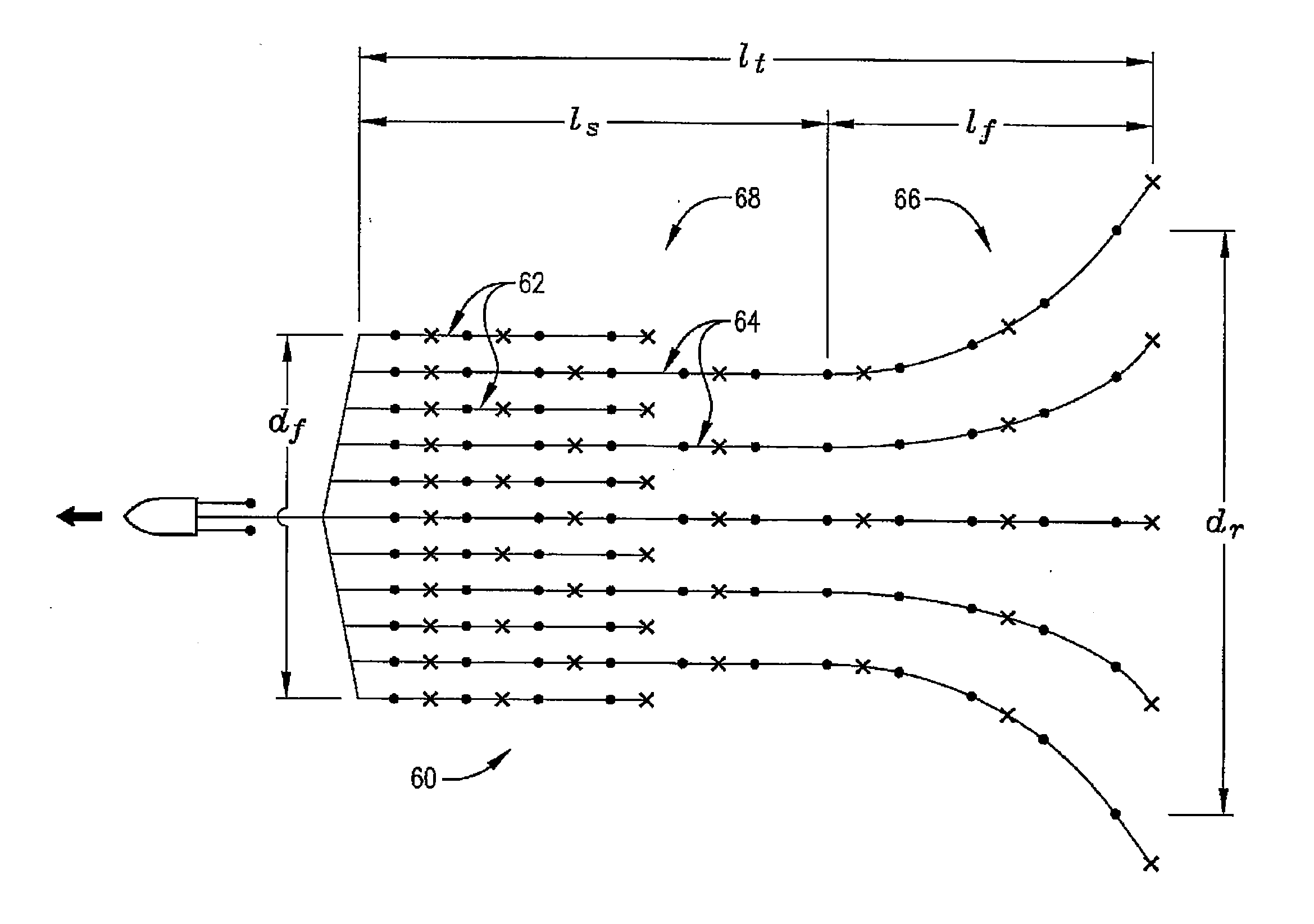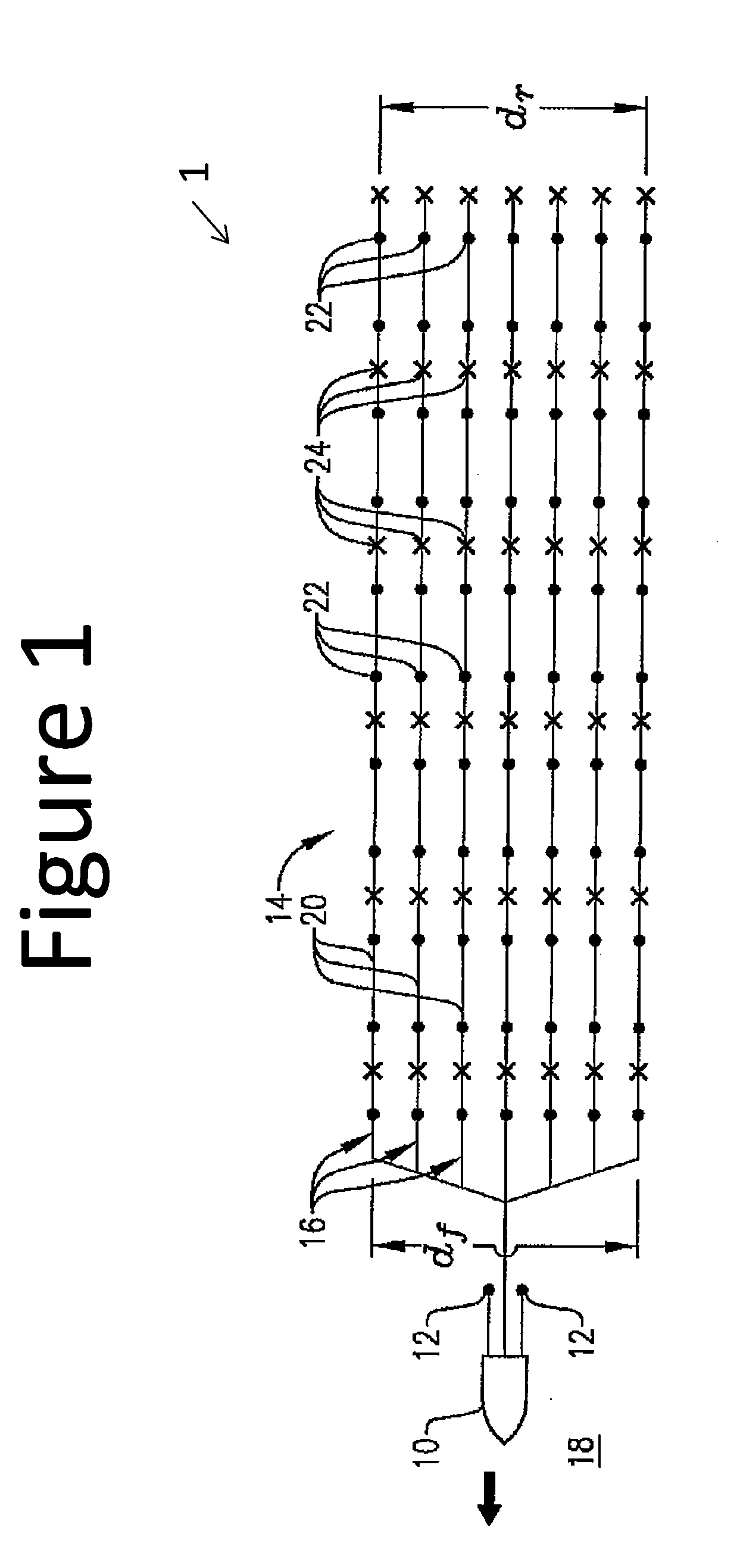Flaring methodologies for marine seismic data acquisition
a technology of seismic data and flaring methods, applied in seismology, seismic data for water-covered areas, instruments, etc., can solve the problems of affecting the quality and utility of the resulting seismic data, unable to acquire any large survey arrangement, and gaps left without coverage, so as to avoid unnecessary infill passes
- Summary
- Abstract
- Description
- Claims
- Application Information
AI Technical Summary
Benefits of technology
Problems solved by technology
Method used
Image
Examples
Embodiment Construction
[0018]Turning now to the detailed description of the preferred arrangement or arrangements of the present invention, it should be understood that the inventive features and concepts may be manifested in other arrangements and that the scope of the invention is not limited to the embodiments described or illustrated. The scope of the invention is intended only to be limited by the scope of the claims that follow.
[0019]An exemplary marine seismic data acquisition system 1, where the streamer spacing is substantially constant over the entire length of the streamers, is shown in FIG. 1. As shown in FIG. 1, the data acquisition system 1 employs a marine vessel 10 to tow seismic sources 12 and a system 14 of steerable seismic streamers 16 through a body of water 18. Each of the seismic streamers 16 includes a streamer cable 20, a series of seismic receivers 22 coupled to the cable 20, and a series of steering devices 24 coupled to the cable 20. During marine seismic data acquisition, the ...
PUM
 Login to View More
Login to View More Abstract
Description
Claims
Application Information
 Login to View More
Login to View More - R&D
- Intellectual Property
- Life Sciences
- Materials
- Tech Scout
- Unparalleled Data Quality
- Higher Quality Content
- 60% Fewer Hallucinations
Browse by: Latest US Patents, China's latest patents, Technical Efficacy Thesaurus, Application Domain, Technology Topic, Popular Technical Reports.
© 2025 PatSnap. All rights reserved.Legal|Privacy policy|Modern Slavery Act Transparency Statement|Sitemap|About US| Contact US: help@patsnap.com



